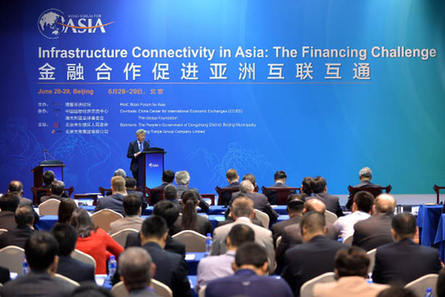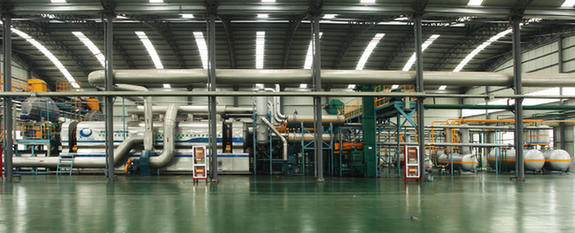Will Asian Infrastructure Investment Bank Become a Reality?
By BAI MING
The world economic pattern is gradually changing in the wake of the international financial crisis. Under the context of economic globalization, the international division of labor is still in progress, but encounters ever more challenges. In addition to the hurdles confronting the multilateral trading system, further adjustments are also required to the global financial architecture. Regional financial cooperation, in common with regional trade cooperation, needs more favorable conditions to develop. The interaction among members of the Asia-Pacific Economic Cooperation (APEC) shows that China has a significant capacity for trade cooperation, and that it will also play an important role in regional financial cooperation.
China is now in the midst of establishing three cooperation platforms. One is the BRICS Development Bank, whose headquarters will be in Shanghai. Another is the Shanghai Cooperation Organization (SCO) Development Bank, which is still under design. And during Chinese President Xi Jinping’s trip to Southeast Asia in October 2013, he proposed establishing an Asian Infrastructure Investment Bank (AIIB).
 |
|
The seminar on “Infrastructure Connectivity in Asia: The Financing Challenge” held in Beijing on June 28-29, 2014. |
New Infrastructure Financing Option
As of August 2014, after four rounds of negotiations, 20 countries were willing to become founding members of the AIIB.
In fact, as early as May 2, 2014, Chinese Finance Minister Lou Jiwei attended the ministerial meeting in Astana, capital of Kazakhstan, on preparations for the AIIB. Other participants included his counterparts in 15 countries, namely Laos, Cambodia, Myanmar, Thailand, Vietnam, Malaysia, Singapore, Brunei, the Philippines, Indonesia, Kazakhstan, South Korea, Mongolia, Pakistan, and Sri Lanka, 10 of whom are ASEAN member nations. China and South Korea also have their respective cooperation frameworks with ASEAN, but these are trade rather than financial cooperation platforms. It is imperative that corresponding financial cooperation platforms be built.
Global management consulting firm McKinsey & Co predicts that from 2010 to 2020, emerging economies in Asia will need US $10 trillion for infrastructure investment, including US $4.1 trillion for energy sources, US $2.5 trillion for transportation, US $1.1 trillion for communications, and US $400 billion for water and environmental health. The fact is that some of the 16 AIIB founding members are underdeveloped countries whose lack of capital in recent years precludes launching any of their infrastructure projects.
Nine of the 16 founding countries, namely China, South Korea, Thailand, Vietnam, Malaysia, Singapore, Brunei, the Philippines, and Indonesia, are also part of APEC. Cooperation within APEC, however, is disproportionate, especially since the U.S. and certain APEC members signed the Trans-Pacific Partnership Agreement (TPP). Setting up the AIIB is vital to China and various APEC member nations. On the one hand, establishing the AIIB will contribute to building an APEC financial cooperation platform. This will foster balanced development of APEC’s trade and financial cooperation. On the other hand, the AIIB could change the general trend whereby wealthy countries, great powers, or APEC member nations lead regional economic cooperation. It could thus enable less developed member countries to obtain maximal benefits from APEC.
The Asian Development Bank (ADB) has in recent years played an indisputably important role in facilitating the economic advance of developing Asian countries and accelerating their infrastructure construction. However, when facing the actual needs of Asian developing countries, the ADB is generally unable to accomplish all it sets out to, let alone achieve a cooperative balance with APEC. The ADB predicts that, by the year 2020, there will be an annual US $800 billion input of infrastructure construction in Asia. But the ADB can only offer annual infrastructure project loans of US $10 billion. Under this scenario, establishing the AIIB will offer a new financing channel for Asian developing countries.

